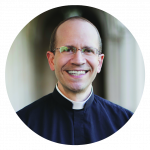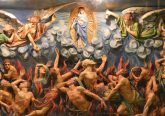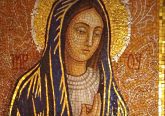Mary’s Assumption
We believe that Mary was assumed into heaven body and soul, but was that before or after her death?
The belief in the Assumption of Mary is not based on eyewitness accounts, nor is it recorded directly in Scripture. This means that the exact details are unknown, which leaves several scenarios open. When Pope Pius XII proclaimed the doctrine of the Assumption in 1950, he wrote, “The Immaculate Mother of God, the ever Virgin Mary, having completed the course of her earthly life, was assumed body and soul into heavenly glory” (Munificentissimus Deus, 44).
MARY’S SINLESSNESS
What then is the evidence for the Assumption? Some theologians have argued that the Assumption is a direct consequence of the belief in Mary’s sinlessness. By her immaculate conception, she was preserved from all stain of original sin, and throughout her life, she did not sin. Because the punishment for sin is the body’s corruption and Mary did not sin, it seems reasonable that her body did not experience deterioration. Paul’s words in Romans 6:23 fittingly apply to the Mother of God: “For the wages of sin is death, but the gift of God is eternal life in Christ Jesus.”
DEATH OR SLEEP?
If bodily decay is the result of sin, it could be that she was immediately taken to heavenly glory at the end of her life— without experiencing death. Early tradition held that Mary fell asleep at the end of her life; various narratives describe her “dormition”—a kind of peaceful sleep. Though not necessarily precluding natural death, this language became popular among Eastern Christians. Accounts of her falling asleep date back to the 5th Century.
Despite this early tradition, Pope John Paul II concluded that Mary died a natural death. For, as he argued, if Christ tasted death, Mary must have as well: “The Mother is not superior to he Son who underwent death.” As he expressed it, “To share in Christ’s Resurrection, Mary had first to share in his death.” He cited Patristic sources that claimed the twelve apostles were present when Mary took her last breath.
BODY AND SOUL
Whatever the circumstances at the end of her earthly life, the commonly held belief is that it did not occasion the separation of her body and soul. As Pope Pius XII taught, “She did not have to wait until the end of time for the redemption of her body.” The normal separation of body and soul experienced at death did not occur in her case; she was taken body and soul into heaven.
For this reason, according to Christian tradition, there is no identified tomb of Mary. Empress Helena, who identified many Holy Land sites, did not assert a location for Mary’s burial or any knowledge of her body’s whereabouts. This fact is especially significant because of how seriously ancient cities vied for the bones of the apostles and martyrs: There is no historical record of such a search for Mary’s body.
HER ASSUMPTION, OUR RESURRECTION
Mary’s Assumption highlights our Catholic belief in the resurrection of both body and soul. Though we are not sinless and will taste death, as Pope Pius XII expressed, “Belief in Mary’s bodily Assumption into heaven will make our belief in our own resurrection stronger and render it more effective” (Munificentissimus Deus, 42). That Mary was assumed into heaven reminds us that our homeland is not here on earth, but we will be raised one day—when our bodies and souls will be united at the final judgment.
 Father David Endres is associate professor of Church history and historical theology at Mount St. Mary’s Seminary & School of Theology.
Father David Endres is associate professor of Church history and historical theology at Mount St. Mary’s Seminary & School of Theology.
This article appeared in the August 2022 edition of The Catholic Telegraph Magazine. For your complimentary subscription, click here.













